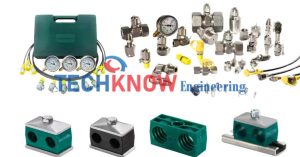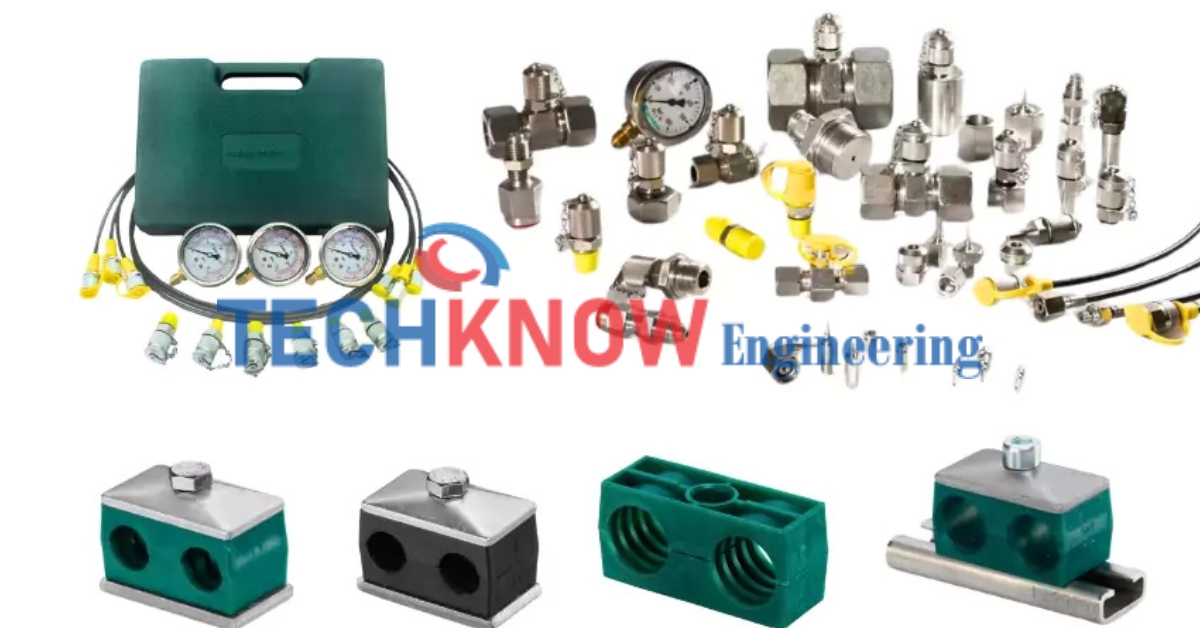What Are Hydraulic Accessories? A Complete Guide
Hydraulic systems power some of the most critical machinery across industries from construction equipment to manufacturing lines. While the main components like pumps and cylinders often get the spotlight, hydraulic accessories play an equally vital role in ensuring smooth, efficient operation. These supporting components might seem minor, but they’re the backbone that keeps hydraulic systems running reliably day after day.
Understanding hydraulic accessories helps equipment operators, maintenance teams, and engineers make informed decisions about system performance, safety, and longevity. Let’s explore what these accessories are, why they matter, and how to keep them in top condition.
Types of Hydraulic Accessories
Hydraulic accessories encompass a wide range of components that support and enhance system functionality. Each serves a specific purpose in maintaining optimal performance.
- Pressure Gauges: Pressure gauges provide real-time monitoring of system pressure levels. These instruments help operators identify potential issues before they escalate into costly failures. Digital and analog options are available, with some featuring alarm functions for critical pressure thresholds.
- Valves: Various valve types control fluid flow, pressure, and direction within hydraulic systems. Relief valves prevent dangerous over-pressurization, while check valves ensure fluid flows in the correct direction. Flow control valves regulate speed and movement precision in hydraulic actuators.
- Filters and Strainers: Clean hydraulic fluid is essential for system longevity. Filters remove contaminants that could damage sensitive components, while strainers catch larger debris. Return line filters, suction strainers, and pressure line filters each serve specific filtration needs at different system points.
- Fittings and Connectors: Hydraulic fittings create secure, leak-proof connections between components. From simple straight fittings to complex multi-port manifolds, these accessories ensure reliable fluid transfer throughout the system. Quick-disconnect couplings allow for easy maintenance access without system drainage.
- Accumulators: These energy storage devices smooth out pressure fluctuations and provide emergency power during pump failures. Bladder, piston, and diaphragm accumulators offer different benefits depending on application requirements.
Importance of Quality Accessories
High-quality hydraulic accessories directly impact system performance, safety, and operational costs. Inferior components can lead to leaks, contamination, and unexpected downtime that far exceeds their initial cost savings.
Premium accessories offer better sealing capabilities, reducing fluid loss and environmental concerns. They also provide more accurate readings and smoother operation, leading to improved productivity and reduced wear on major components.
Quality accessories typically feature better materials and manufacturing tolerances. This translates to longer service life, fewer replacements, and reduced maintenance labor costs. The upfront investment in quality accessories pays dividends through improved reliability and reduced total cost of ownership.
System efficiency also improves with quality accessories. Properly functioning filters maintain clean fluid, reducing internal friction and heat generation. Accurate pressure regulation prevents energy waste while ensuring optimal performance across all operating conditions.
Maintenance Tips
Regular maintenance of hydraulic accessories prevents costly system failures and extends equipment life. Here are essential maintenance practices:
- Monitor Pressure Readings: Check pressure gauges regularly for unusual readings that might indicate developing problems. Document readings to identify trends over time.
- Replace Filters Promptly: Follow manufacturer recommendations for filter replacement intervals. Clogged filters restrict flow and can cause pump damage or system overheating.
- Inspect Fittings: Look for signs of leakage, corrosion, or loosening. Tighten connections to proper torque specifications and replace damaged fittings immediately.
- Test Safety Valves: Periodically verify that relief valves operate at correct pressure settings. This critical safety function protects both equipment and personnel.
- Maintain Clean Fluid: Regular fluid analysis helps identify contamination issues before they damage system components. Replace hydraulic fluid according to manufacturer guidelines or test results.
Maximizing Your Hydraulic System Investment
Hydraulic accessories may seem like small components, but they play an outsized role in system performance and reliability. Understanding their functions and maintaining them properly ensures your hydraulic systems deliver consistent, efficient operation.
At Techknow Engineering Enterprise, we understand that every component matters in hydraulic system design and maintenance. Quality accessories, combined with proper maintenance practices, create the foundation for dependable hydraulic systems that support your operational goals.
Whether you’re designing a new system or maintaining existing equipment, investing in quality hydraulic accessories and following proper maintenance procedures will pay dividends in performance, safety, and cost savings.
Hydraulic Accessories

Hydraulic accessories like pressure gauges, valves, filters, and fittings are crucial for maintaining efficient and safe hydraulic systems. These components ensure optimal performance, reduce downtime, and prolong equipment life. Proper selection and maintenance of hydraulic accessories are key to operational success.
Product Brand: Techknow Engineering Enterprise
Product Currency: INR
Product In-Stock: InStock
5


